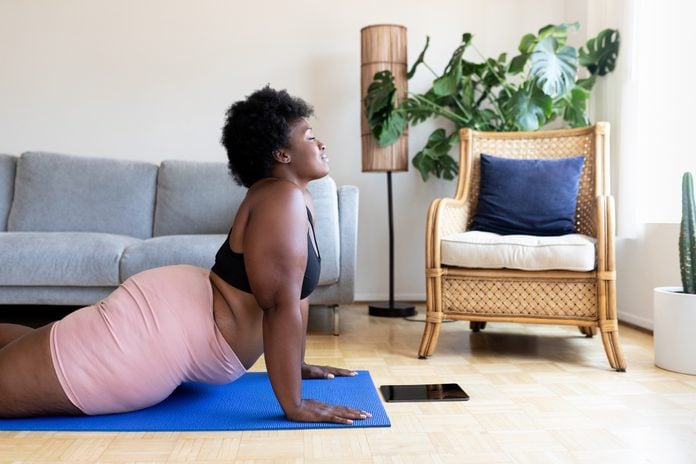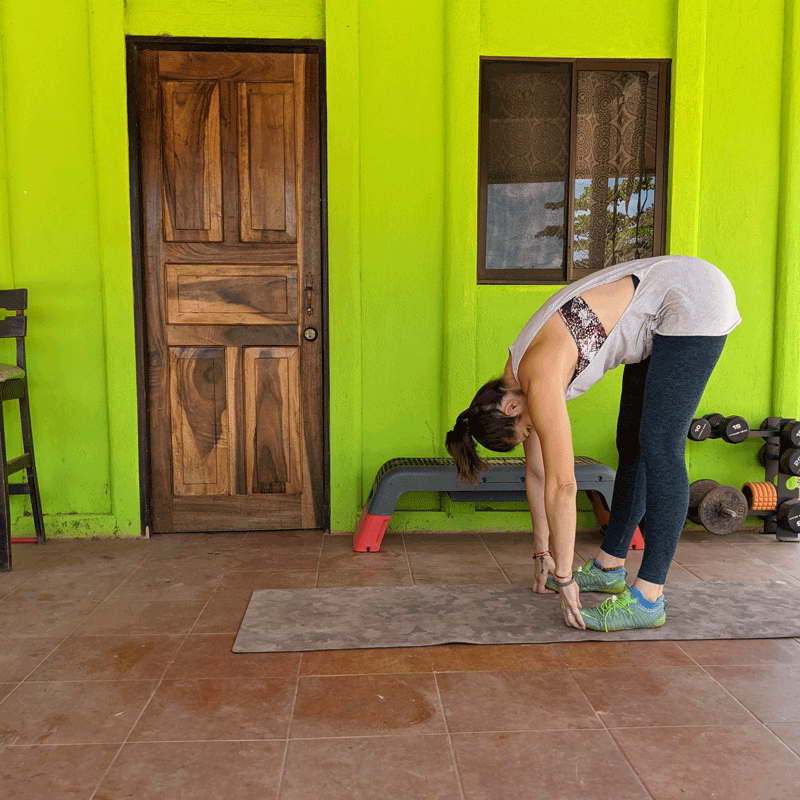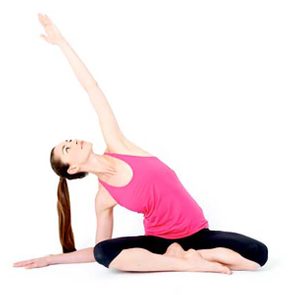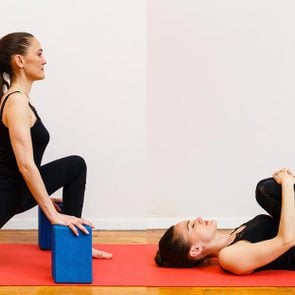Is it Safe to Use Ballistic Stretching Before Exercise?
Updated: Jun. 10, 2021
If you're bouncing in your stretches, it's time to stop. Here's the definition of ballistic stretching, some examples, and why it's no longer considered safe or effective—and possibly even dangerous.
What is ballistic stretching?
You might not be familiar with the term “ballistic stretching,” but chances are you’ve tried this type of stretching at some point in your life.
Remember the butterfly stretch from elementary school gym class? You’d sit on the ground, feet together and knees opened outward before “flapping the butterfly wings”—bouncing your knees up and down to deepen the stretch. If you’ve done that, you’ve done ballistic stretching.
Likewise, if you were ever instructed to reach for your toes, then “bounce” your torso up and down to try to get your hands closer to your feet, you’re familiar with the movement pattern.
“Ballistic stretching happens when you first passively stretch out muscles around a joint, then use the momentum of other areas of your body to bounce in and out of the stretch, forcefully trying to go further with each bounce,” says Grayson Wickham, a physical therapist and certified strength and conditioning specialist.
Although this doesn’t sound like a bad idea, experts advise caution when trying ballistic stretching. Here’s everything you need to know about this type of stretching.
(Try these morning stretches for energy.)
Main types of stretching
According to Wickham, there are three main types of stretching: passive, active, and ballistic. To grasp ballistic stretching, it helps to understand how the other two types work.
Passive stretching
Passive stretching is what you typically think of when doing a pre- or post-workout stretch: you move to a point where the muscles surrounding a joint feel a stretch, then you relax and hold the position for a predetermined amount of time (typically between 20 and 60 seconds).
For instance, you might do the butterfly stretch mentioned above, but instead of bouncing your knees, you simply relax your muscles and hold the position, allowing your knees to continue opening outward as the muscles around the joint gradually loosen.
(This easy stretching routine includes passive stretches.)
Active stretching
Active stretching, on the other hand, takes place when you move to a point of feeling a stretch at a given joint, but instead of passively relaxing into the stretch, you actively contract the muscles being stretched. You’ll sometimes hear these moves called dynamic stretches.
This can be done in different ways, including a type of dynamic warm-up before a workout where you might move through a full range of motion of an exercise, like a squat. You would find the point of stretch, then move out of it, repeating the action multiple times. But when you find the point of stretch and contract your muscles, you’re not trying to push yourself deeper into the stretch.
Ballistic stretching vs. active stretching: What’s the difference?
This is where things can get confusing. You might think that ballistic stretching sounds a lot like active stretching, but they differ in how the stretched muscles respond to the move. “It’s not considered an active stretch, as you’re not contracting the same muscles that you’re stretching out,” says Wickham, who is also founder of Movement Vault and Lux Physical Therapy and Performance in New York City.
Think about it: at the end of a controlled motion like a squat—a type of active stretching—you’ll feel a deep stretch. The muscles you’re stretching are engaged and contracting. (Add these squat exercises to your workout.)
On the other hand, if you’re bouncing your body in and out of a stretch, as with ballistic stretching, the muscles responsible for movement aren’t the same muscles you’re trying to stretch. You’re using momentum from other muscle groups to throw or propel yourself deeper into a stretch.
Does ballistic stretching work?
Ballistic stretching has fallen out of favor in the exercise science community, in part because it’s less effective than active and passive stretching methods. And if a method of stretching doesn’t work as well, why keep using it?
According to a 2018 review of studies published in the International Journal of Sports Medicine on the overall effects of stretching on range of motion, all types of stretching can lead to improvements, but static stretching comes out on top.
One thing to note: this review was looking solely at the impact of stretching on range of motion, not on other factors, such as athletic performance or injury risk.
When taking all of those factors into consideration, Wickham points to active stretching as the gold standard.
“Passive stretching and ballistic stretching have been shown to decrease performance and increase injury risk when performed before an athletic endeavor or a workout,” he says.
The tricky science on ballistic stretching
The research on ballistic stretching isn’t black and white. Sometimes, for instance, dynamic stretching studies include ballistic stretches as part of the protocol.
And in studies that review the findings of multiple trials (meta-analyses and reviews), there is significant variation what the researchers are examining: type of stretch, length of stretch, muscle groups being stretched, the populations being studied (athletes or general population, men or women, young or old), timing of stretch (length of time and when it’s performed), and the overall effects being studied (changes in range of motion or effects on athletic performance).
This makes it hard to draw hard-and-fast conclusions without continuing to perform more research.
In fact, one 2020 review study performed by students at Winthrop University and presented at a university research showcase noted that ballistic stretching is the least researched form of stretching.
On top of that, in athletes who need to perform more high-velocity movements (think professional dancers, gymnasts, or football players), ballistic stretching may offer some benefits. The ultimate question is: Do these possible benefits outweigh the potential risks, and are they any more beneficial than other forms of stretching? It’s currently unknown.
Injury risk with ballistic stretching
Increased injury risk is the second reason ballistic stretching has lost fans in the exercise community.
“Ballistic stretching has the potential to create an injury while actually performing the stretch,” Wickham says. “This increased injury risk happens because you are forcefully trying to stretch your muscles around a joint past their limitations.”
He draws a parallel between stretching a rubber band and stretching your muscles. If you continually try to forcefully stretch a rubber band to its limits and beyond, what eventually happens? The band either becomes stretched out past its point of use, or it snaps.
(Beware of these exercises that could injure you.)
So, should you try ballistic stretching?
Given that other forms of stretching are more effective and carry less risk of injury, there’s no need for ballistic stretching.
Wickham says his preferred form of stretching is always active, particularly before a workout to help warm up the muscles. On recovery days or after a workout, he’ll do more passive stretching to cool down and loosen up. That said, he’s pretty clear when it comes to his opinion on ballistic stretching. “No one should be utilizing ballistic stretching unless they have time to waste and want to potentially deal with an injury,” he says.
(Have trouble sleeping? Try these stretches for better sleep.)
The last word
On a whole, more research is needed to determine the benefits of ballistic stretching—and if they’re worth the drawbacks. In the meantime, it’s safe to skip ballistic stretching in your standard workout routine. Let the researchers continue to do their research, and you can leave your “flapping butterfly wings” out of the gym.






















